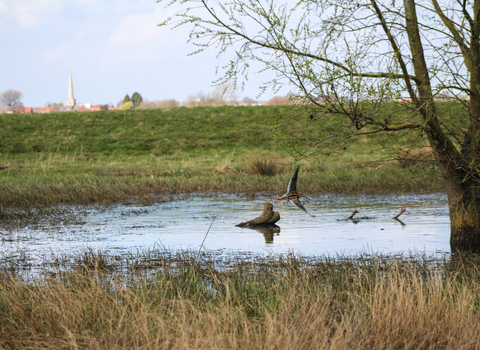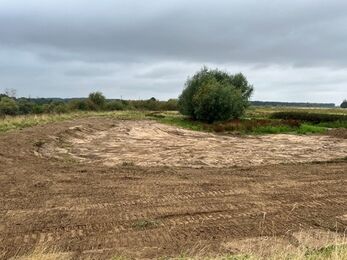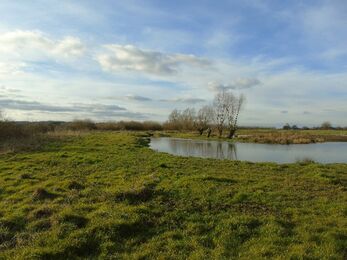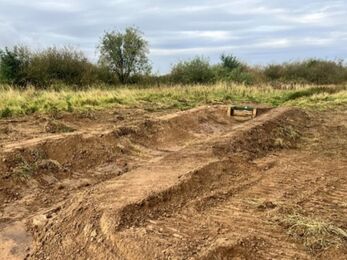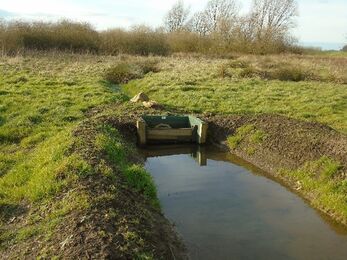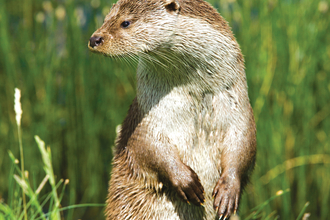A safe haven for wildlife in the Derwent Catchment
Barmby on the Marsh Wetlands is a small wetland nature reserve, located at the meeting point between the River Derwent and River Ouse.
Owned by Environment Agency, it is at the very southern tip of the Lower Derwent Valley (LDV) National Nature Reserve. The reserve is a Site of Special Scientific Interest (SSSI), designated for its importance for wildfowl and lowland waders.
This reserve was once a thriving wildlife haven. When the reserve floods at high tide, pockets of standing water are created which is perfect habitat for ducks and geese, as well as wading birds like snipe and lapwing. Over recent decades, these birds have declined in numbers. This was partly due to willow growing vigorously on the reserve, which led to large areas of the wetland drying out. In early 2019, through the Environment Agency’s ‘Doing more for the Derwent’ project, Yorkshire Wildlife Trust (as part of the Yorkshire Derwent Catchment Partnership) began to restore the site to encourage wildlife to return and connect habitats across the Lower Derwent Valley.
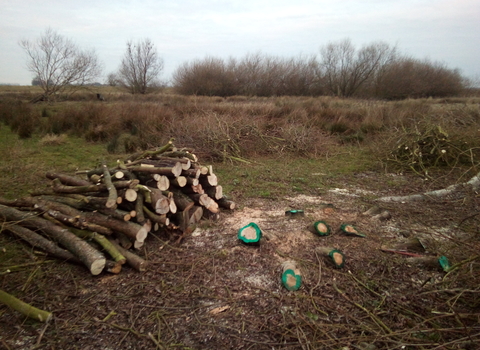
Re-wetting the wetlands
With the help of the local community, Friends of the LDV and Yorkshire Wildlife Trust volunteers, this dominating willow was removed from the site. By removing excess willow, which acts like a sponge soaking up water, the wetlands have become wet again! It has also opened up the site, making it more desirable to birds so they can easily detect predators. Many of the remaining trees have been pollarded or coppiced to create a more diverse habitat.
Scrape restoration works were done in summer which enlarged and deepened the existing scrapes on site to provide improved habitat for wetland species such as breeding and migratory birds. Great water parsnips, tansy plants, water mints and plantain were planted in the scrapes. These plants were quarantined and carefully checked by the staff and volunteers of Yorkshire Water at Tophill Nature Reserve near Driffield and donated to YDCP.
Below you can see the excavated shallow scrape in the south-east of the reserve (August 2024) and the same scrape after tidal inundation, holding water and with vegetated banks.
We've also installed sluices to control the water leaving the site. This will help support better water level management on the site and keep the scrapes wet for longer periods, benefitting dragonfly and other invertebrates along with breeding waders.
Whilst access to the reserve is restricted to protect the wildlife, viewing slots around the fence line have been created so you can enjoy this wetland wonder. Signs can also be found around the edge of the reserve to provide an insight into the work we have been doing, the species that you can see, and why Barmby Marsh Wetlands is important for the Lower Derwent Valley.
Barmby on the Marsh Wetlands
Funder
Environment Agency (Doing More for the Derwent project)
Timescale
2022

